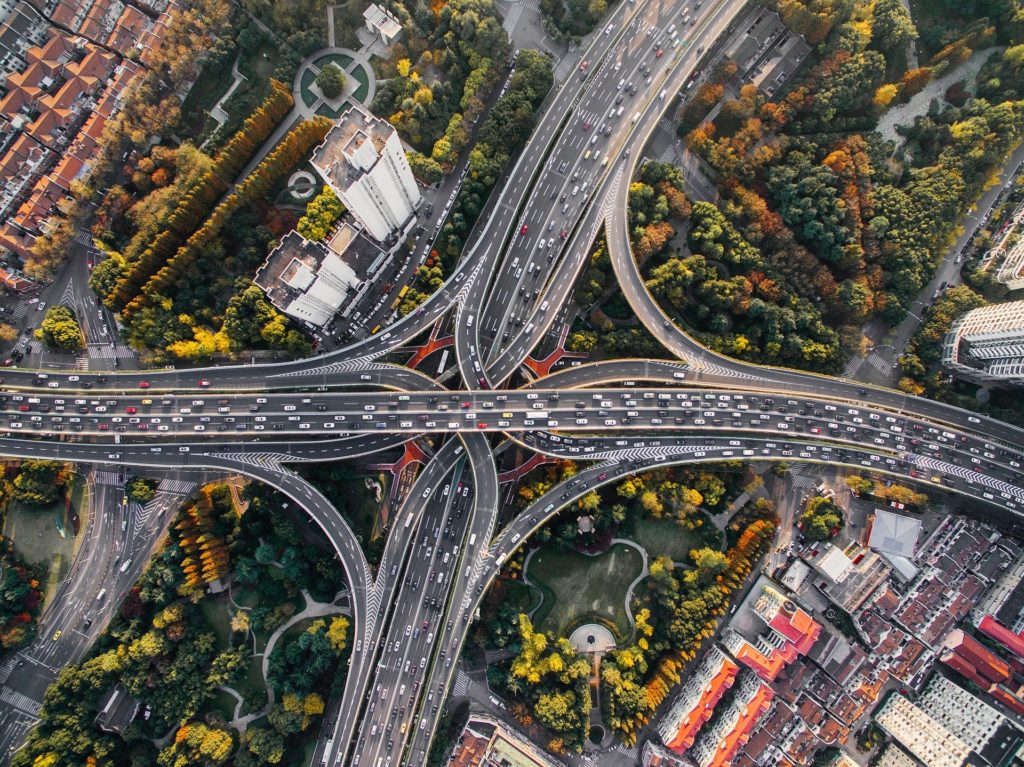
Leveraging crowdsourcing to manage traffic has become commonplace in our deeply digitized and share-heavy society, thanks to apps like Google Maps and Waze. A government-academic partnership is looking to push the merger of data and traffic a few steps — or car lengths — further. The U.S. Department of Energy‘s Transportation team at Argonne National Laboratory is collaborating with UC Berkeley’s Lawrence Berkeley National Laboratory to investigate mobility systems. The new project aims to expediently predict and redirect traffic and is turning to machine learning algorithms to improve the process.
The Argonne National Laboratory is using supercomputers to gather data, that they say can ‘digest traffic patterns from nearly a year’s worth of data taken from 11,160 sensors on the California highway system.’ That data is used to train an AI model that can forecast future traffic patterns. “Within milliseconds, the model can look at the past hour of data and predict the next hour of traffic with great accuracy,” writes Argonne’s Liz Thompson.
This innovative use of AI to manage traffic is detailed in a paper that Argonee published in a transportation journal in July. The paper notes that this new approach uses a ‘graph-partitioning method to decompose a large highway network into smaller networks and trains them independently.’ The specific problem that the researchers needed to solve was that ‘traffic patterns have complex spatial and temporal dependencies that make accurate forecasting on large highway networks a challenging task.’ Complex AI techniques are being investigated to solve the problem. “Recently, diffusion convolutional recurrent neural networks (DCRNNs) have achieved state-of-the-art results in traffic forecasting by capturing the spatiotemporal dynamics of the traffic. Despite the promising results, however, applying DCRNNs for large highway networks still remains elusive because of computational and memory bottlenecks.”
Erik Rask is one of the researchers who worked on the study. “Traffic forecasting approaches are critical to developing adaptive strategies for transportation,” Rask says. “Traffic patterns have complex spatial and temporal dependencies that make accurate forecasting on large highway networks a challenging task.” The new research and technique will enable traffic management centers to react to and address traffic jams and quickly reroute traffic.
Argonne is particularly focused on alleviating traffic issues in light of their detrimental economic impact. The group is also researching the energy impact of vehicle technology and how to make better engines. Sibendu Som is the manager of Argonne’s Computational Multi-Physics Section and is working on vehicle efficiency. “Traditionally, researchers will try to reduce the complexity of combustion reactions to save time when running simulations, but doing so can reduce the accuracy of their output,” Som says. “With our new model, aided by machine learning, we can account for the entire fuel chemistry without sacrificing accuracy. This capability is unique, not only in its application of neural networks but also in its ability to significantly reduce development time.”
The federal Department of Transportation is also jumping on the AI efficiency bandwagon to solve problems. The website for that entity notes it is actively ‘adopting and deploying AI-based tools into internal operations, research, and citizen-facing services.’ The DOT also states it has invested in natural language processing, computer vision, and machine learning predictive analytics.
Tech companies are also getting involved. NVIDIA which specializes in Graphics Processing Units (GPUs) is now pursuing AI to improve mobility and transportation. Not only is NVIDIA active in research and development for autonomous vehicles, but also for data collection, model training, and simulation. Another interesting application of AI to assist in mobility efficiency is NVIDIA’s push into the development of smart cities. The company has a partnership with Italy’s University of Modena and Reggio Emilia located in the same region as the headquarters of automotive powerhouses Lamborghini, Ferrari, Ducati. The city of Modena is also home to MASA — the Modena Automotive Smart Area — a geographic zone equipped with sensors and cameras to advance connected driving technologies. The area has become a hotbed of innovation in transportation. NVIDIA is partnering with Italy’s National Laboratory of Artificial Intelligence and Intelligent Systems aims to train students, nurture startups and spread adoption of AI throughout Italy.
Artificial Intelligence is being implemented in industries all over the world and is a central theme of the research undertaken at UCIPT. Our work in the HOPE study is using data to assess and shift behavioral outcomes among HIV and other populations.
